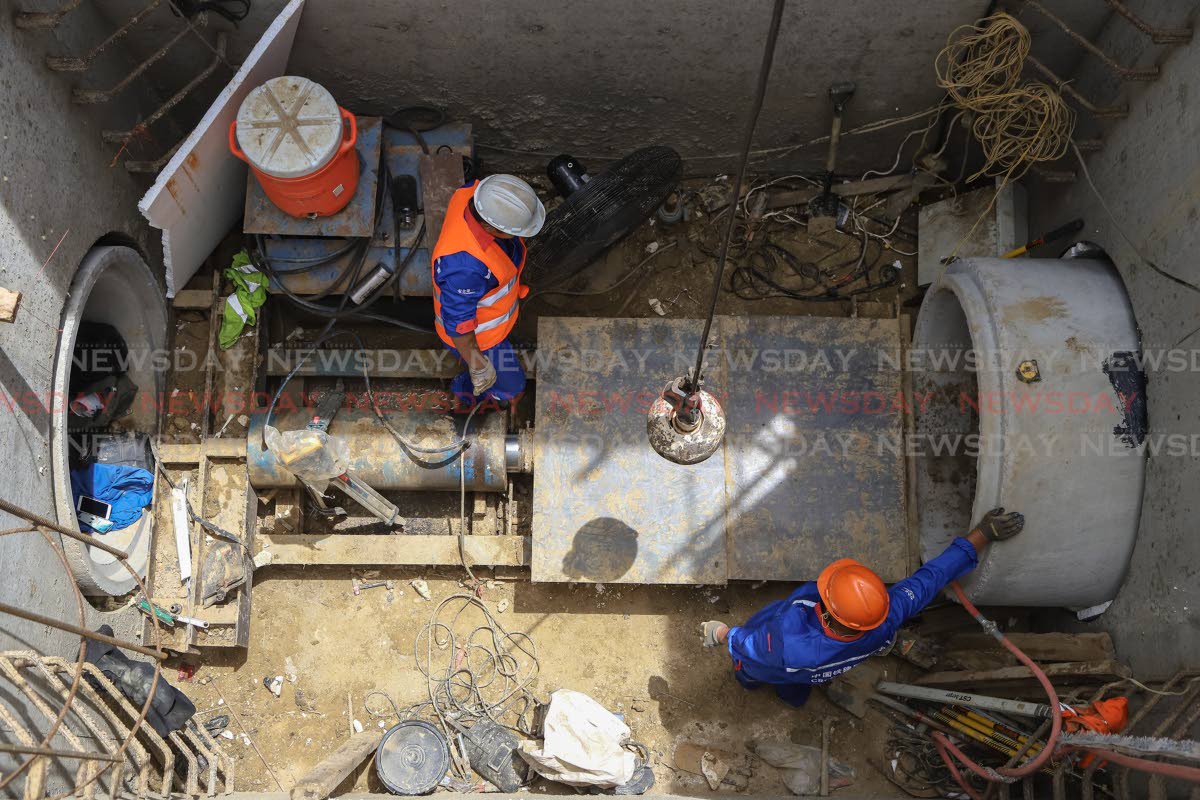Govt uses cheaper, quicker way to replace culverts

Government has saved almost $5 million on one project by using a technique called tunnelling to replace damaged culverts on the Sir Solomon Hochoy highway near the Freeport flyover.
Works and transport minister Rohan Sinanan, revealed the figures as he was speaking to the media on the work site in Freeport. The project is being spearheaded by the China Railway Construction (Caribbean) Company Ltd.
A culvert is a tunnel that carries water from a stream, river or open drain under a roadway or walkway.
The original cost of such a project could be about $7 million but the ministry was able to get it done for around $2 million, Sinanan said.
The tunnelling method was used because of the depth of the culverts at this location. If the traditional method was used the project could have taken up to three months.
Sinanan explained that the technology used was not new but had been used by several other countries around the world and was much quicker and more efficient. It also helped to prevent unnecessary congestion on the highway and there were little to no traffic disruptions during the process.
“It’s similar to what you call tunnelling. We have not been using this in Trinidad. Normally the system we use is we mobilise the contractors, we excavate and there’s a huge inconvenience to the travelling public. A project like this would have to be done over probably three or four weekends and a lot of disruption in traffic,” he said.
The entire project took about eight weeks as compared to the old method which could take up to 12 and cause significant traffic jams. The replacement of the culverts in the northbound lane is already finished and those in the southbound lane should be finished by next Thursday.
Sinanan said the construction crew, which is a mix of local and Chinese labour, had been operating on 24-hour shifts to make sure the project was completed quickly. Even as people use the highway, crews are working underground, he added.
At least ten other culverts have been identified where tunnelling might be used to replace them with new ones if the terrain allows, he said.
Sinanan also gave an update on the project to upgrade the culverts on the Beetham Highway. The tunnelling method was not used on that project because both the Water and Sewerage Authority (WASA) and the National Gas Company (NGC) had lines running through the culverts there.
Sinanan said, however, that through the Programme for Upgrading Roads Efficiency Unit (PURE), some work was done that might even help alleviate flooding problem in downtown Port of Spain.
“First we had to remove the NGC lines and what we are doing now is WASA is working on removing their lines. WASA actually has three lines running through the culvert.”
He added WASA previously thought they only had two lines running through the culvert but recently discovered a third and that had delayed the project a bit. Sinanan expects that by next weekend the ministry will begin to replace the culverts there.
Sinanan also highlighted the Chaguanas Ring Road project that aims to ease congestion in Chaguanas and environs.
“What we anticipate with this project, which will be open in the next week or so, is that it will help significantly with the traffic around that whole Pricesmart area there. It should eliminate a lot of the traffic or, if not, all the traffic going in certain directions."





Comments
"Govt uses cheaper, quicker way to replace culverts"